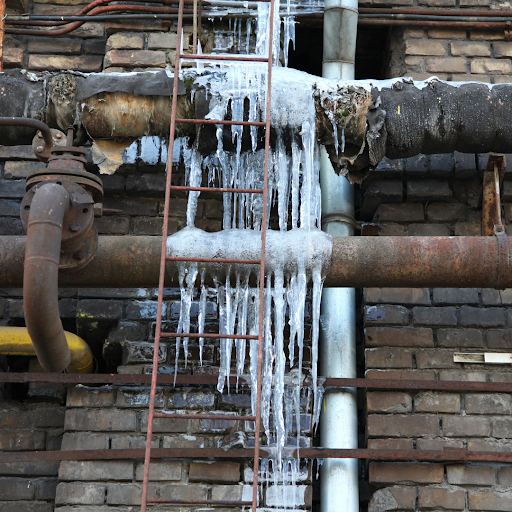Tips to Defend Plumbing System from Cold Weather: Critical Strategies
Tips to Defend Plumbing System from Cold Weather: Critical Strategies
Blog Article
We have discovered the article on How To Avoid Freezing Pipes below on the net and believe it made good sense to discuss it with you on my blog.

Cold weather can ruin your plumbing, particularly by freezing pipes. Right here's just how to prevent it from occurring and what to do if it does.
Intro
As temperatures decline, the threat of icy pipelines rises, possibly leading to pricey fixings and water damages. Recognizing just how to stop icy pipelines is critical for home owners in chilly climates.
Avoidance Tips
Protecting vulnerable pipelines
Wrap pipelines in insulation sleeves or utilize heat tape to secure them from freezing temperatures. Concentrate on pipes in unheated or external areas of the home.
Home heating techniques
Maintain interior areas sufficiently heated, particularly locations with plumbing. Open cupboard doors to permit warm air to distribute around pipelines under sinks.
Just how to identify frozen pipes
Look for reduced water flow from taps, uncommon smells or noises from pipelines, and visible frost on revealed pipelines.
Long-Term Solutions
Structural adjustments
Think about rerouting pipes away from outside walls or unheated locations. Include extra insulation to attic rooms, cellars, and crawl spaces.
Updating insulation
Invest in premium insulation for pipes, attics, and wall surfaces. Appropriate insulation aids preserve consistent temperature levels and minimizes the danger of frozen pipes.
Shielding Outside Plumbing
Yard pipes and exterior taps
Disconnect and drain pipes garden tubes before winter. Set up frost-proof faucets or cover outdoor taps with protected caps.
Understanding Icy Pipelines
What creates pipelines to ice up?
Pipes ice up when revealed to temperatures listed below 32 ° F (0 ° C) for expanded periods. As water inside the pipes freezes, it broadens, taxing the pipeline wall surfaces and possibly creating them to rupture.
Threats and problems
Frozen pipelines can bring about water disturbances, building damage, and pricey repair services. Ruptured pipes can flood homes and trigger extensive architectural damage.
Signs of Frozen Water Lines
Identifying frozen pipelines early can prevent them from breaking.
What to Do If Your Pipes Freeze
Immediate activities to take
If you think icy pipelines, maintain faucets open up to soothe pressure as the ice thaws. Use a hairdryer or towels taken in warm water to thaw pipes gradually.
Conclusion
Protecting against frozen pipes calls for positive steps and quick responses. By recognizing the reasons, indications, and preventive measures, homeowners can shield their pipes during cold weather.
5 Ways to Prevent Frozen Pipes
Drain Outdoor Faucets and Disconnect Hoses
First, close the shut-off valve that controls the flow of water in the pipe to your outdoor faucet. Then, head outside to disconnect and drain your hose and open the outdoor faucet to allow the water to completely drain out of the line. Turn off the faucet when done. Finally, head back to the shut-off valve and drain the remaining water inside the pipe into a bucket or container. Additionally, if you have a home irrigation system, you should consider hiring an expert to clear the system of water each year.
Insulate Pipes
One of the best and most cost-effective methods for preventing frozen water pipes is to wrap your pipes with insulation. This is especially important for areas in your home that aren’t exposed to heat, such as an attic. We suggest using foam sleeves, which can typically be found at your local hardware store.
Keep Heat Running at 65
Your pipes are located inside your walls, and the temperature there is much colder than the rest of the house. To prevent your pipes from freezing, The Insurance Information Institute suggests that you keep your home heated to at least 65 degrees, even when traveling. You may want to invest in smart devices that can keep an eye on the temperature in your home while you’re away.
Leave Water Dripping
Moving water — even a small trickle — can prevent ice from forming inside your pipes. When freezing temps are imminent, start a drip of water from all faucets that serve exposed pipes. Leaving a few faucets running will also help relieve pressure inside the pipes and help prevent a rupture if the water inside freezes.
Open Cupboard Doors
Warm your kitchen and bathroom pipes by opening cupboards and vanities. You should also leave your interior doors ajar to help warm air circulate evenly throughout your home.

I have been very curious about How to Prevent Your Pipes From Freezing and I'm hoping you appreciated the piece. Do you know another individual who is involved in the subject? Why not share it. Thank you so much for taking the time to read it.
Show Details Report this page